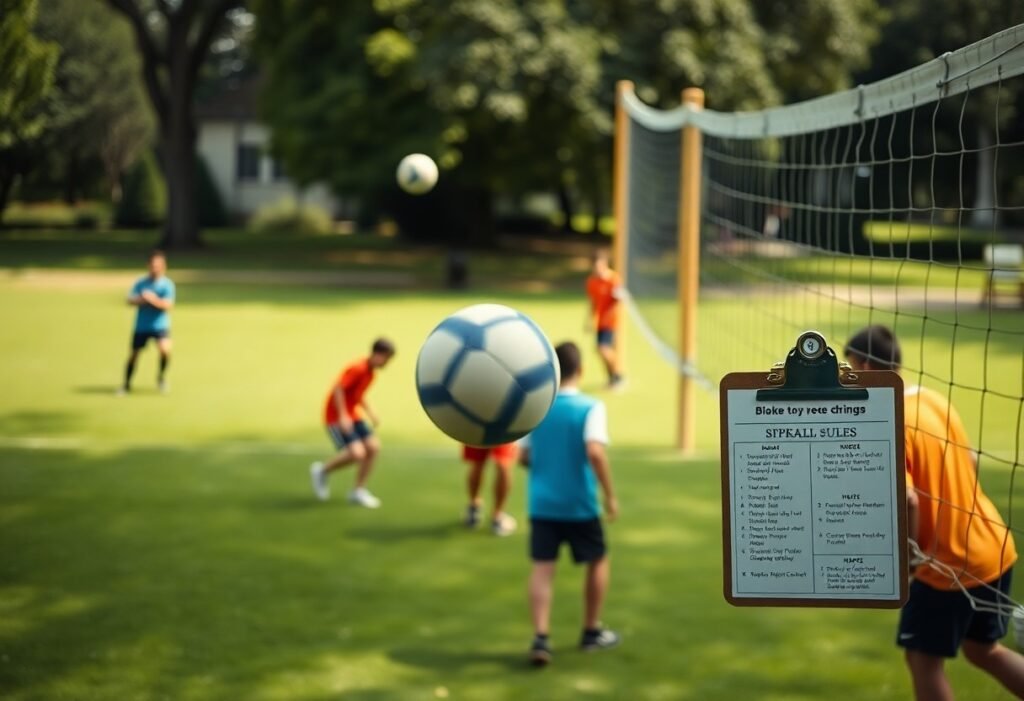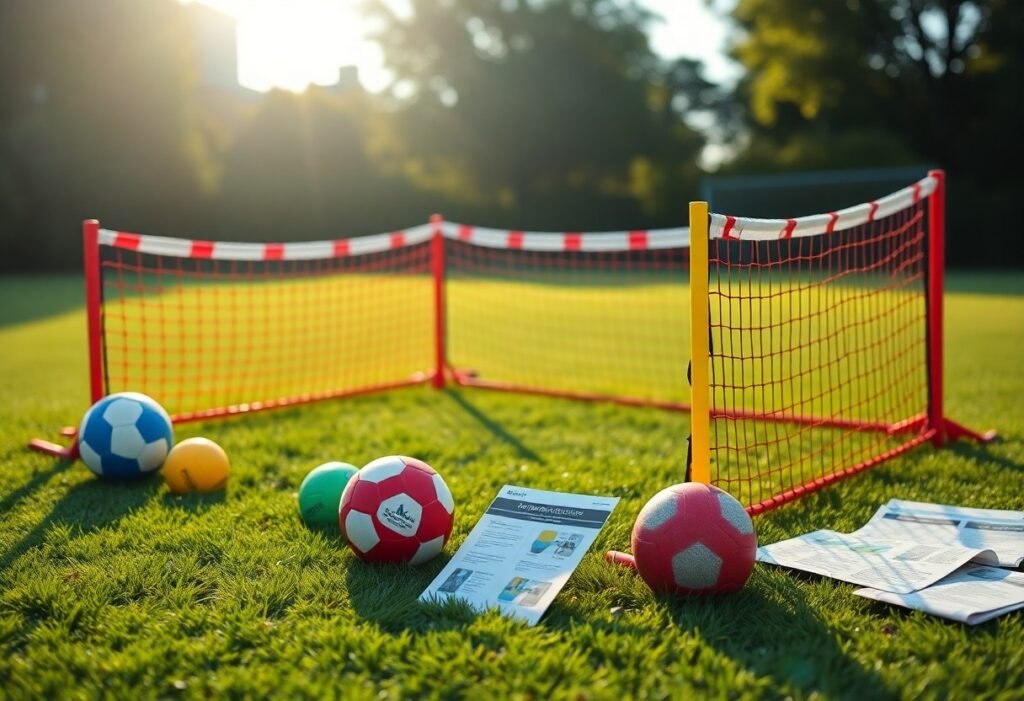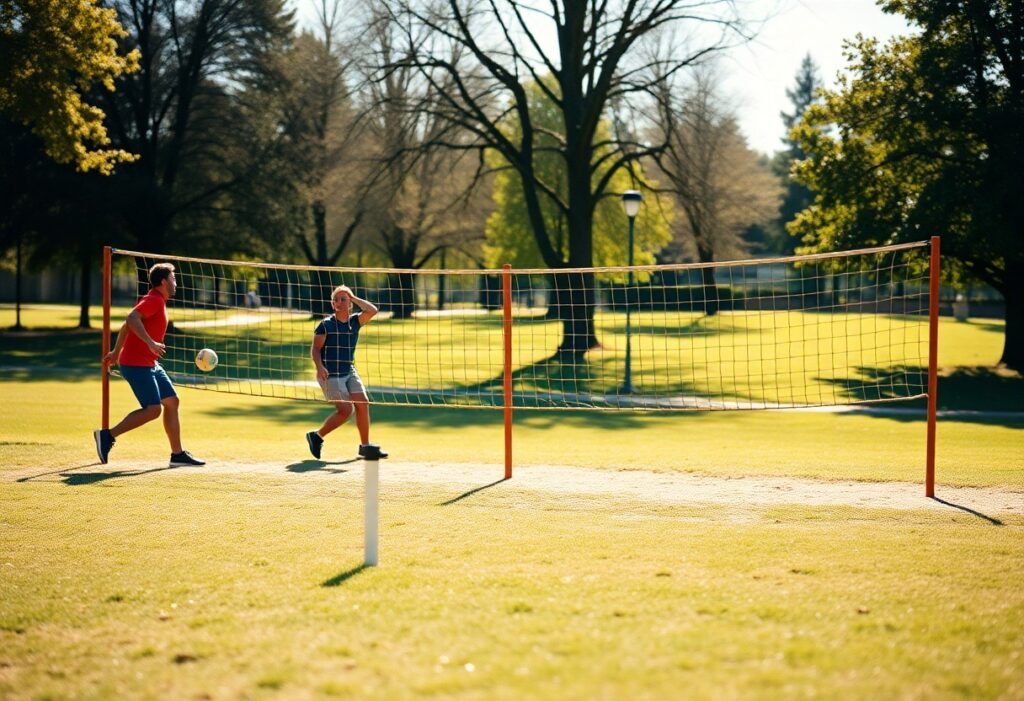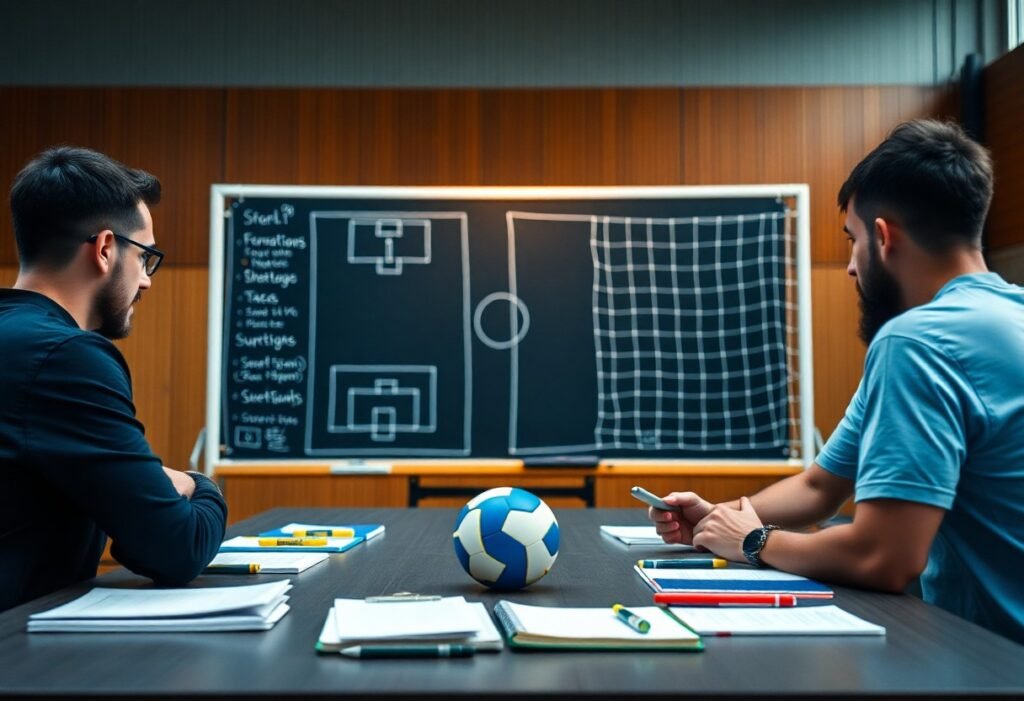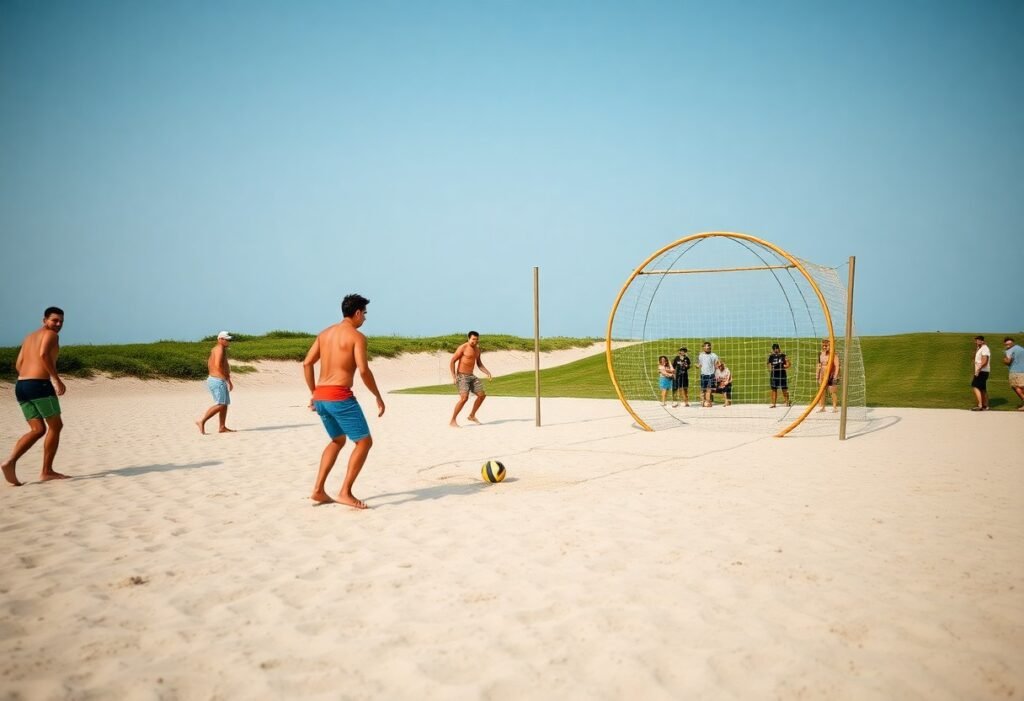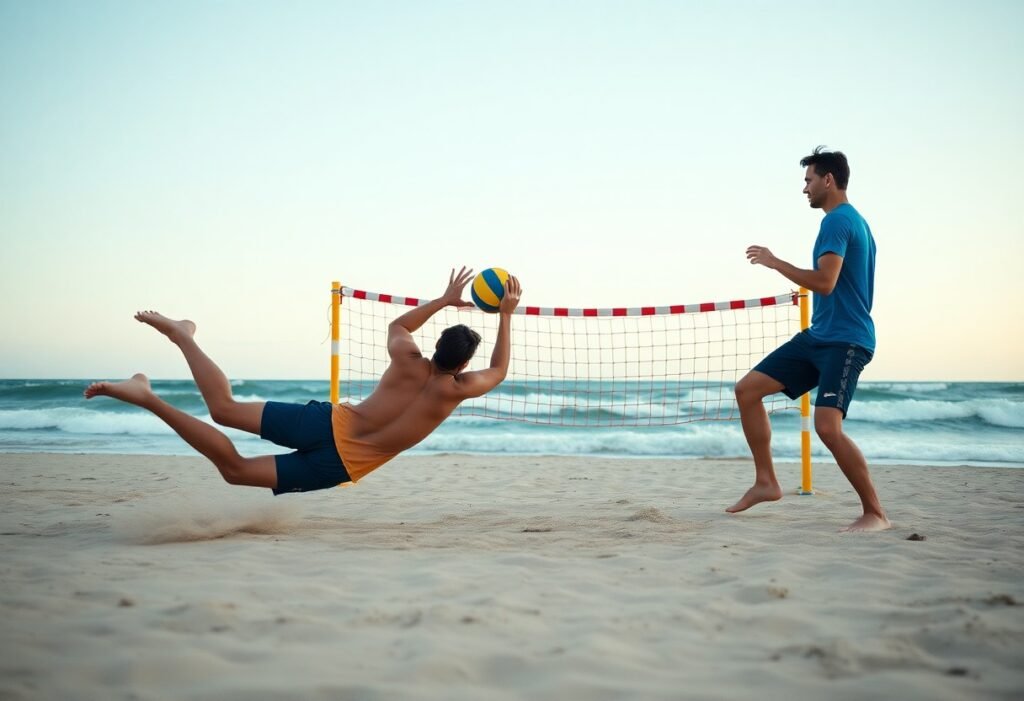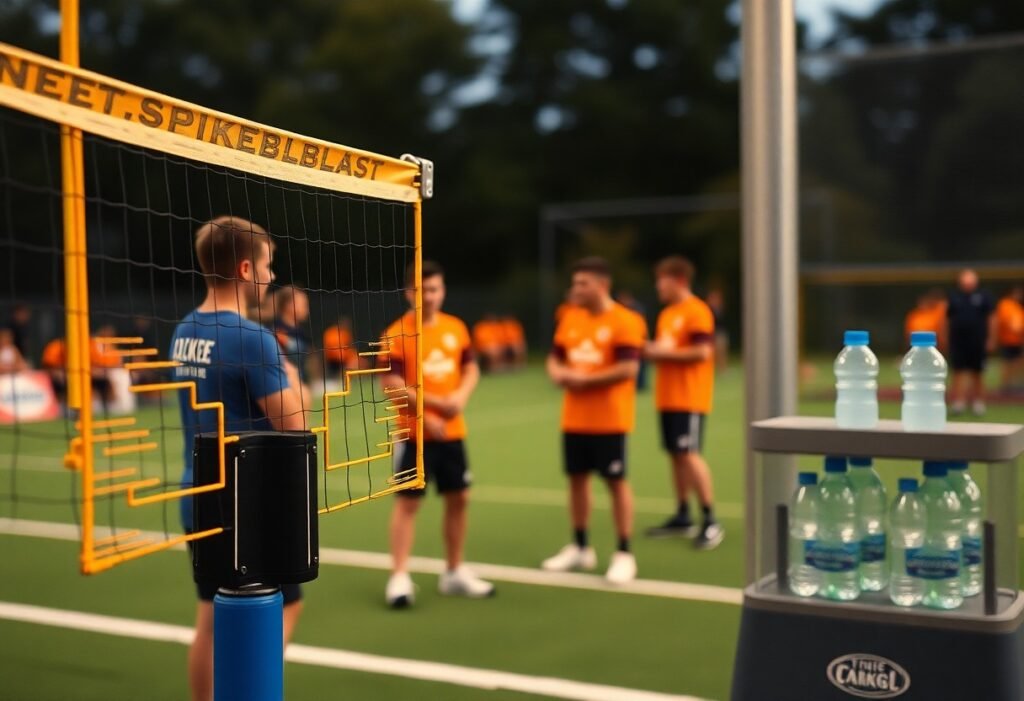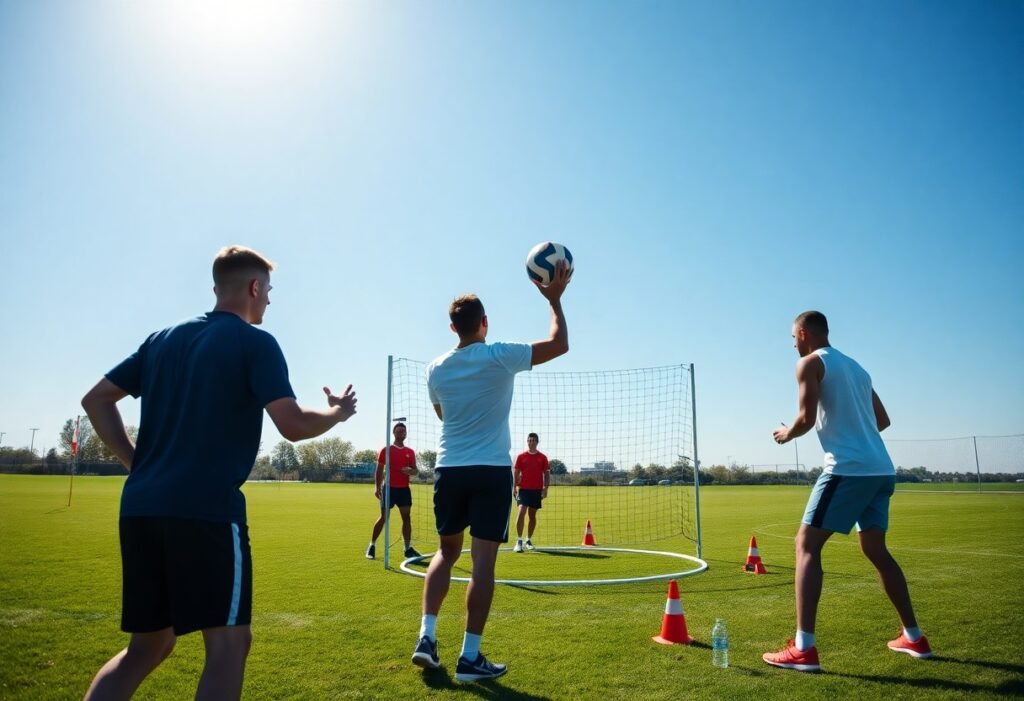Over the year, the excitement of Spikeball doesn’t have to fade away just because you’re indoors. This guide will teach you how to set up your own indoor Spikeball environment, ensuring you can enjoy this fast-paced game with friends and family, no matter the weather. You’ll learn about necessary equipment, space requirements, and rules modifications to optimize your gameplay. By adapting to indoor conditions, you can maintain the energy and fun of Spikeball while staying safe and engaged throughout the seasons.

Key Takeaways:
- Indoor Spikeball can be played on various surfaces, including gym floors and carpets, making it accessible year-round.
- Adjust rules and scoring systems to accommodate indoor play and ensure a fun competitive environment.
- Use lightweight, portable Spikeball sets for easy setup and transportation to indoor venues.
Understanding Indoor Spikeball
Overview of Spikeball
Spikeball is an engaging team sport played with a circular net and a small ball, often likened to a mix of volleyball and four-square. Teams of two compete to bounce the ball off the net in such a way that the opposing team cannot return it, requiring both skill and strategy. The game’s fast pace and dynamic nature make it a favorite for players of all ages, easily adaptable for indoor settings.
Benefits of Playing Indoor Spikeball
Playing Indoor Spikeball offers numerous advantages, including enhanced physical fitness, improved teamwork, and all-weather accessibility. Engaging in this sport helps you develop agility, coordination, and cardiovascular fitness while having fun with friends or family. Additionally, indoor play creates a controlled environment free from outdoor distractions.
Furthermore, Indoor Spikeball fosters social connections, making it an excellent activity for team-building or family gatherings. The game encourages communication and cooperation among teammates, strengthening bonds. The ability to play regardless of weather conditions also means you can enjoy continuous practice, crucial for skill development and mastering techniques.
Essential Equipment for Indoor Gameplay
To enjoy Indoor Spikeball, you primarily need a Spikeball set, which includes a round net and a ball. Additionally, consider using a soft, non-scratching surface if playing in areas like gyms or indoors at home to prevent damage. Comfort is key, so opting for lightweight athletic shoes tailored for indoor sports can greatly enhance your performance.
When selecting a Spikeball set, make sure it’s of high quality to withstand intense play. Some sets are specifically designed for indoor use, equipped with stabilizing features to prevent the net from shifting during gameplay. Having a reliable net system allows you to focus on refining your skills and enjoying the game without interruptions.
Setting Up Your Indoor Spikeball Court
Choosing the Right Space
Selecting an appropriate space for your indoor Spikeball game is important. Look for areas with ample room, ideally 20 feet by 20 feet, where you can move freely without obstacles. Gymnasiums, basements, or large living rooms can work, ensuring the floor isn’t too slippery. This will help maintain your balance while playing and prevent injuries.
Marking Boundaries for Play
Establishing clear boundaries is necessary for fair play in Spikeball. You can use colored tape or cones to mark the area, creating a rectangular or circular playing space that outlines where the ball can be played and retrieved.
To define the play area, consider laying down brightly colored tape that contrasts with the floor surface. This helps players quickly recognize the boundaries during fast-paced gameplay. A diameter of 10 feet around the net is often recommended to ensure that players can move freely without running into walls or furniture.
Setting Up the Spikeball Net
Position the Spikeball net at an appropriate height (which is typically around 36 inches in the center) to ensure a level playing field. Make sure the net is taut and stable, as any sagging can affect gameplay.
When assembling the net, follow the manufacturer’s instructions closely for optimal setup. The net should be placed in the center of your marked boundaries. Ensuring it is properly tensioned will prevent the ball from bouncing unpredictably, maintaining the flow of the game. For a visual reference, check out this Beginner Spikeball Game Tutorial for Calgary Summer Fun!.

How to Play Indoor Spikeball
Basic Rules of the Game
Indoor Spikeball follows straightforward rules that enhance your gameplay experience. Each team of two players takes turns hitting the ball onto the net, challenging the opposing team to return it within three hits. If the ball hits the ground or fails to hit the net, the rally is awarded to the other team. It’s crucial to uphold fair play and sportsmanship throughout the game.
Scoring in Spikeball
Scoring in Indoor Spikeball is simple but competitive. You score points when the opposing team fails to return the ball within the three-hit limit or if the ball contacts the ground. Typically, a match is played to 21 points, with teams needing to win by at least two points.
In practice, games can become intense as rallies progress. You’ll often see scores pushing beyond 21 due to the need for a two-point lead, which means strategy becomes vital. Knowing when to play aggressively or defensively can transform the outcome of close matches.
Team Formation and Player Roles
Forming teams in Indoor Spikeball can significantly impact your strategy and overall success on the court. Teams usually consist of two players each, allowing for effective communication and coordinated movements. Assign roles based on individual strengths; for instance, you might designate one player as a setter, focusing on setting up plays.
Understanding each player’s role is integral to teamwork. A setter can concentrate on ball placement, while the other player can anticipate and prepare for opposing spikes. Balancing offense and defense through clearly defined roles ensures maximum effectiveness, keeping your opponents on their toes and enhancing your chances of winning.
Tips for Indoor Spikeball Strategies
- Understand your playing surface to enhance your gameplay.
- Work on teamwork and communication for effective plays.
- Develop a variety of serves to keep opponents guessing.
- Utilize quick reflexes to respond to opponent’s shots.
- Focus on positioning to improve your overall defense.
After honing these strategies, you’ll find your performance improving significantly.
Effective Serving Techniques
Mastering your serves can set the tone for the entire match. A strong serve can catch your opponents off guard, creating an immediate advantage. Aim for accuracy and spin, targeting specific areas of the trampoline to limit your opponent’s response options.
Defensive Strategies to Use
Positioning is the key to a strong defense in indoor Spikeball. Stay alert and anticipate the direction of the ball, adjusting your stance to cover as much ground as possible. Use short, quick movements to respond to fast shots, and always keep an eye on your partner’s positioning.
Incorporate effective communication with your teammate to enhance defensive coverage. Call out when you’re taking the lead on a shot and coordinate your movements to ensure coverage of the trampoline. By understanding your opponents’ tendencies and reacting swiftly, you’ll be able to intercept balls and limit their scoring opportunities, ultimately putting your team at a strategic advantage.
Offensive Plays to Master
Implementing diverse offensive plays can keep your opponents on their toes. Utilize quick sets and varying shot types, such as cuts and drops, to control the pace of the game and dictate the action. Constantly switch up your approach to prevent predictable gameplay.
Focus on timing and teamwork to execute effective offensive maneuvers. Coordinating your shots with your partner can lead to strategic plays that force your opponents into difficult positions. Practice faking and changing the angle of your shots to create openings. As you master these plays, your offensive game will become much stronger, enabling your team to dominate the court.
Factors to Consider for Year-Round Play
- Weather conditions
- Availability of facilities
- Community engagement
- Scheduling flexibility
Weather Considerations for Indoor Play
Frequent outdoor rain or snow can disrupt your Spikeball matches. Choosing indoor venues protects your games from inclement weather conditions. Ensure that the playing surface remains consistently dry to avoid slipping. Additionally, heated indoor locations will keep you comfortable during colder seasons, enhancing your overall experience.
Choosing the Right Time for Matches
Finding the optimal time for your indoor Spikeball matches involves assessing both personal and community schedules. Weekday evenings or weekends often provide the most flexibility, allowing maximum participation and enjoyment. Consider coordinating with local facilities to secure regular time slots, ensuring consistent gameplay.
Setting up a recurring schedule for matches can keep the excitement alive. You can alternate between days and times to accommodate various players, reaching out through local social media groups or community boards. Establishing a rhythm will help solidify friendships and create a competitive environment, fostering your Spikeball skills while enjoying the game.
Finding Indoor Spikeball Communities
Engaging with local Spikeball communities can enrich your playing experience. Many cities host clubs or leagues dedicated to this exciting sport, offering regular matches and social events. Reaching out to these groups can connect you with fellow enthusiasts, enhancing competition and camaraderie.
Online platforms, such as Facebook groups or specialized forums, often list nearby events and community gatherings. Joining these networks allows you to stay informed about upcoming tournaments and practice sessions. Participating in these communities not only improves your skills but also expands your social circle, making indoor play more enjoyable and dynamic. Perceiving the potential for both fun and growth in Spikeball will significantly enhance your dedication and experience year-round.

Enhancing Your Indoor Spikeball Experience
Adding Variations to the Game
To keep things exciting, introduce variations like adding a bounce rule or changing the number of touches allowed before hitting the ball. These tweaks can significantly alter play dynamics, making the game more challenging and enjoyable. Consider incorporating elements like a time limit for scoring or playing with teams of different sizes to keep everyone engaged and on their toes.
Organizing Tournaments and Leagues
Setting up tournaments or leagues elevates the indoor spikeball experience by fostering friendly competition. Create clear guidelines, including scoring systems and match formats. Gather the enthusiasts from your community and schedule regular events to build anticipation and excitement around the game.
Utilizing platforms like social media or community boards can help in organizing these events, drawing in participants and spectators alike. Tracking the performance of teams or individuals can enhance competitiveness. Establishing a league table or leaderboard fosters a sense of achievement, encouraging players to improve their skills while promoting a fun, engaging atmosphere.
Socializing and Making Connections
Indoor spikeball serves as a perfect backdrop for socializing, naturally breaking the ice and forging connections. Gather friends, family, or even colleagues to engage in warm-up games before stepping into more competitive matches. These interactions build camaraderie, making the sport not just about the game but the relationships formed around it.
As you participate in regular games, the social aspect of spikeball becomes more apparent. You’ll find that shared experiences foster a sense of belonging within the community. Consider hosting themed nights or casual meetups where players can celebrate victories and share memorable moments, further strengthening these bonds through the joy of gameplay.
Conclusion
Considering all points, playing Indoor Spikeball year-round offers you not only a fun way to stay active but also an opportunity to improve your skills regardless of the weather. By setting up a designated indoor space and familiarizing yourself with the rules and techniques, you can enjoy competitive matches with friends or family. This accessibility ensures that you can experience the excitement of Spikeball any time of the year, keeping you engaged and fit while enhancing your social interactions.
FAQ
Q: What are the basic rules of Indoor Spikeball?
A: Indoor Spikeball is typically played with two teams of two players each. The objective is to hit the ball onto the net in a way that the opposing team cannot return it. Each team has up to three hits to return the ball, and players can use any part of their body to strike the ball. The game is played to 21 points, and teams must win by at least two points.
Q: What equipment do I need for Indoor Spikeball?
A: To play Indoor Spikeball, you need a Spikeball set, which includes a round net and a ball. It is also advisable to have padding or mats to help with the floor’s impact and to wear non-slip athletic shoes for better traction.
Q: How can I set up a suitable playing area indoors?
A: To set up an Indoor Spikeball court, choose a spacious area with a flat surface, ensuring that there’s enough room around the net for players to move. It’s recommended to clear away any obstructions and use soft flooring, like a gym mat or carpet, for added safety.
Q: Can you play Indoor Spikeball in smaller spaces?
A: Yes, you can play Indoor Spikeball in smaller spaces by adjusting the game rules. You can reduce the size of the playing area or play with fewer players. Just ensure there is enough space for players to move and the ball to bounce off the net.
Q: How do I improve my skills in Indoor Spikeball?
A: To improve at Indoor Spikeball, focus on practicing ball control, communication with your partner, and strategic positioning. Engage in drills that develop your serving and returning techniques, and consider playing with more experienced players to learn different strategies.



